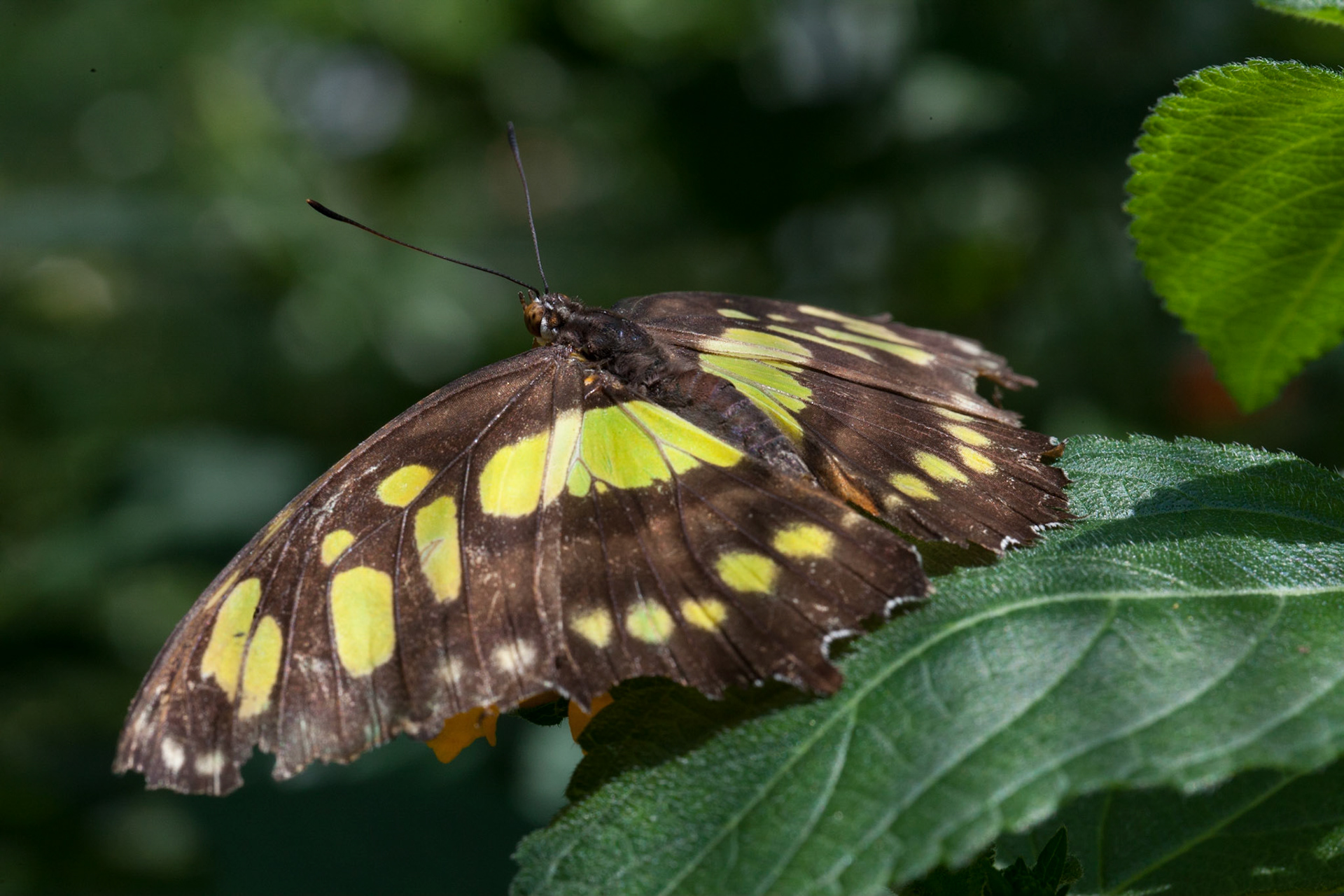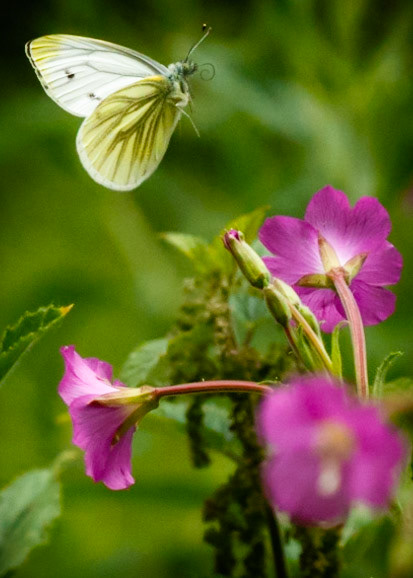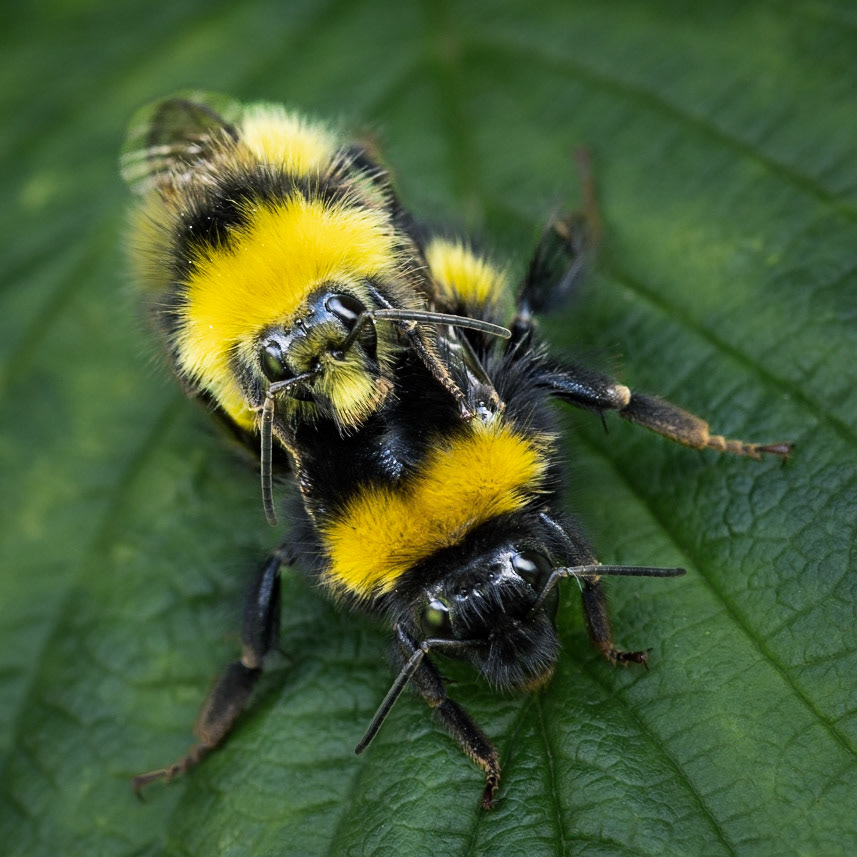
The Marbled White is a distinctive and attractive black and white butterfly, unlikely to be mistaken for any other species. In July it flies in areas of unimproved grassland and can occur in large numbers on southern downland. It shows a marked preference for purple flowers such as Wild Marjoram, Field Scabious, thistles, and knapweeds. Adults may be found roosting halfway down tall grass stems.

The Marbled White is a distinctive and attractive black and white butterfly, unlikely to be mistaken for any other species. In July it flies in areas of unimproved grassland and can occur in large numbers on southern downland. It shows a marked preference for purple flowers such as Wild Marjoram, Field Scabious, thistles, and knapweeds. Adults may be found roosting halfway down tall grass stems.

urkish Red Damsel (Ceriagrion georgifreyi)

Blue Damselfly

Brimstone Butterfly

Brimstone Butterfly

The common green bottle fly (Lucilia sericata) is a blow fly found in most areas of the world, and the most well-known of the numerous green bottle fly species. It is 10–14 mm long, slightly larger than a house fly, and has brilliant, metallic, blue-green or golden colouration with black markings. It has short, sparse black bristles (setae) and three cross-grooves on the thorax. The wings are clear with light brown veins, and the legs and antennae are black.

Worker Bee

The Froghopper (Aphrophora alni) The adult is oval in outline, usually marbled brown in colour. Jumps well. It creates a frothy mass known as "cuckoo spit" in which it lives.

This is an extremely common hover fly, widespread in Britain and Ireland. It is found in gardens, hedgerows and woodland, and visits flowers to feed on nectar. The larvae feeds on Aphids.
![The Cinnabar Caterpillar. Like several other Arctiinae larvae, cinnabar caterpillars can turn cannibalistic. This is mainly due to lack of food, but they can eat other cinnabar larvae.[4] Initially, the larvae are pale yellow, but later larval stages develop a jet-black and orange/yellow striped colouring. They can grow up to 30 mm (1.2 in), and are voracious eaters; large populations can strip entire patches of ragwort clean, a result of their low predation.](data:image/gif;base64,R0lGODlhAQABAIAAAAAAAP///yH5BAEAAAAALAAAAAABAAEAAAIBRAA7)
The Cinnabar Caterpillar. Like several other Arctiinae larvae, cinnabar caterpillars can turn cannibalistic. This is mainly due to lack of food, but they can eat other cinnabar larvae.[4] Initially, the larvae are pale yellow, but later larval stages develop a jet-black and orange/yellow striped colouring. They can grow up to 30 mm (1.2 in), and are voracious eaters; large populations can strip entire patches of ragwort clean, a result of their low predation.

Lesser House Fly

The Anthomyiidae are a large and diverse family of Muscoidea flies. Most look rather like small houseflies, but are commonly drab grey. The genus Anthomyia, in contrast, is generally conspicuously patterned in black-and-white or black-and-silvery-grey.

The Anthomyiidae are a large and diverse family of Muscoidea flies. Most look rather like small houseflies, but are commonly drab grey. The genus Anthomyia, in contrast, is generally conspicuously patterned in black-and-white or black-and-silvery-grey.

This sometimes abundant species has been known to swarm and to migrate short distances to mass breeding grounds. It has become destructive to crops and pastureland at times, mostly where natural habitats have been converted to agricultural purposes. However, its numbers are normally too small to cause significant damage.

Gasteracantha cancriformi (the star spider, spiny-backed orbweaver, spiny orbweaver spider, crab-like orbweaver spider, crab-like spiny orbweaver spider, jewel spider, spiny-bellied orbweaver, jewel box spider or smiley face spider) lives in woodland edges. The web has densely spaced radii and an open hub, and may be placed from near ground level to several metres up. Their venom is not known to be dangerous to man

The blue dasher (Pachydiplax longipennis) is a dragonfly of the skimmer family. They will eat just about anything, but their favourite meals are mosquito larvae. The meals change when they hatch into adults, but their insatiable appetite does not.

Darwin's bark spider (scientific name Caerostris darwini) is an orb-weaver spider that produces one of the largest known orb webs, ranging from 900 to 28,000 square centimetres (140 to 4,340 sq in). Its silk is the toughest biological material ever studied, over ten times tougher than a similarly-sized piece of Kevlar. The species was named in honour of the naturalist Charles Darwin, with the description being prepared precisely 150 years after the publication of The Origin of Species, on 24 November 2009.

Buff-tailed Bumblebees Mating



















![The Cinnabar Caterpillar. Like several other Arctiinae larvae, cinnabar caterpillars can turn cannibalistic. This is mainly due to lack of food, but they can eat other cinnabar larvae.[4] Initially, the larvae are pale yellow, but later larval stages develop a jet-black and orange/yellow striped colouring. They can grow up to 30 mm (1.2 in), and are voracious eaters; large populations can strip entire patches of ragwort clean, a result of their low predation.](https://cdn.myportfolio.com/69730556-ec56-4978-b376-879eac0ff674/8355fc4e-9052-460d-852f-04b0a5506b6b_rw_1920.jpg?h=2d2e477c2ad5052f5e9c55175512731c)









